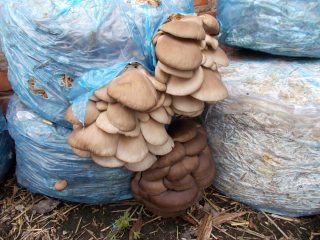Content
Broken fiberweed (Inocybe lacera) is a poisonous representative that mushroom pickers should not put in their basket. It grows during the mushroom season, when there is a lot of honey mushrooms, russula, and champignons. It is important to distinguish fiber from other lamellar mushrooms, which are conditionally edible, otherwise urgent medical attention will be required.
What does a torn fiber look like?
The torn fiber is small in size. Her hat is like a bell with a bump in the middle. It is colored light brown, sometimes with a yellow tint, and has a diameter of 1 to 5 cm. With age, the surface of the mushroom darkens, acquiring a brown color, and the cap cracks at the edges. A thin blanket in the form of a cobweb sometimes hangs from the fiber.
The stem of the mushroom can be either straight or curved, light brown with reddish scales. Its length usually does not exceed 8 cm, and its thickness is 1 cm. Wide brownish plates are fused with the stem. The spores are orange-brown. The flesh inside is yellowish-white at the cap and reddish at the stem.
Where does the torn fiber grow?
Torn fiber grows in damp coniferous and deciduous forests, thickets of willow and alder. It can be found on the side of forest paths and ditches. It prefers sandy soils and shady, secluded places where good edible mushrooms grow.
Fibers are found both in numerous groups and individually. The fruiting season lasts from July to September.
Is it possible to eat torn fiber?
The mushroom has a faint odor and a bitter taste, which at first tastes sweet, but it is not worth eating. Broken fiber is poisonous, its consumption leads to death if help is not provided to the victim in time. The mushroom pulp contains a dangerous poison - muscarine in a concentration that is tens of times higher than that of the red fly agaric.
The toxicity of the fungus is not reduced by heat treatment. Toxins persist after cooking, drying, freezing. One broken fiber that gets into a mushroom harvest can ruin the entire canned food or dishes for the everyday table.
Symptoms of poisoning
Inexperienced mushroom pickers may confuse the mushroom with honey mushrooms; cases of poisoning by these mushrooms have been described. It gets very bad after about 20 minutes. after eating torn fibers for food. A severe headache begins, blood pressure rises, limbs tremble, and the skin turns red.
Muscarine contained in mushrooms causes salivation and sweat, severe cramps in the stomach, intestines and other organs. There is sharp pain in the abdominal cavity, vomiting and diarrhea. The heart rate slows down, the pupils become very narrow, and visual disturbances occur. With a large amount of poison, cardiac arrest occurs.
First aid for poisoning
At the first symptoms of poisoning, you must call emergency medical help. Before doctors arrive, they try to induce vomiting in the victim and perform an enema to remove the contents of the stomach and intestines. Fortunately, there is an antidote to muscarine - atropine, but doctors will inject it. Before the ambulance arrives, you can use any sorbent - activated carbon, Filtrum or Smecta.
At the hospital where the victim is taken, his stomach will be washed out using a tube. If symptoms characteristic of muscarine poisoning appear, atropine will be administered subcutaneously as an antidote. They will give you an IV to improve your general condition.
If the dose of toxins is small and first aid for poisoning was provided on time, the prognosis for treatment is favorable. Eating inedible mushrooms by children is especially dangerous. They require a much smaller dose of muscarine to stop the heart than adults, and help may not arrive in time.
Conclusion
Torn fiberwort is a dangerous representative that should not be confused with honey mushrooms, champignons and other lamellar mushrooms. It contains the deadly poison muscarine, which causes vomiting and diarrhea, severe stomach pain, and leads to cardiac arrest.The victim needs immediate help, as the poison begins to act within 20-25 minutes after eating the torn fiber.









